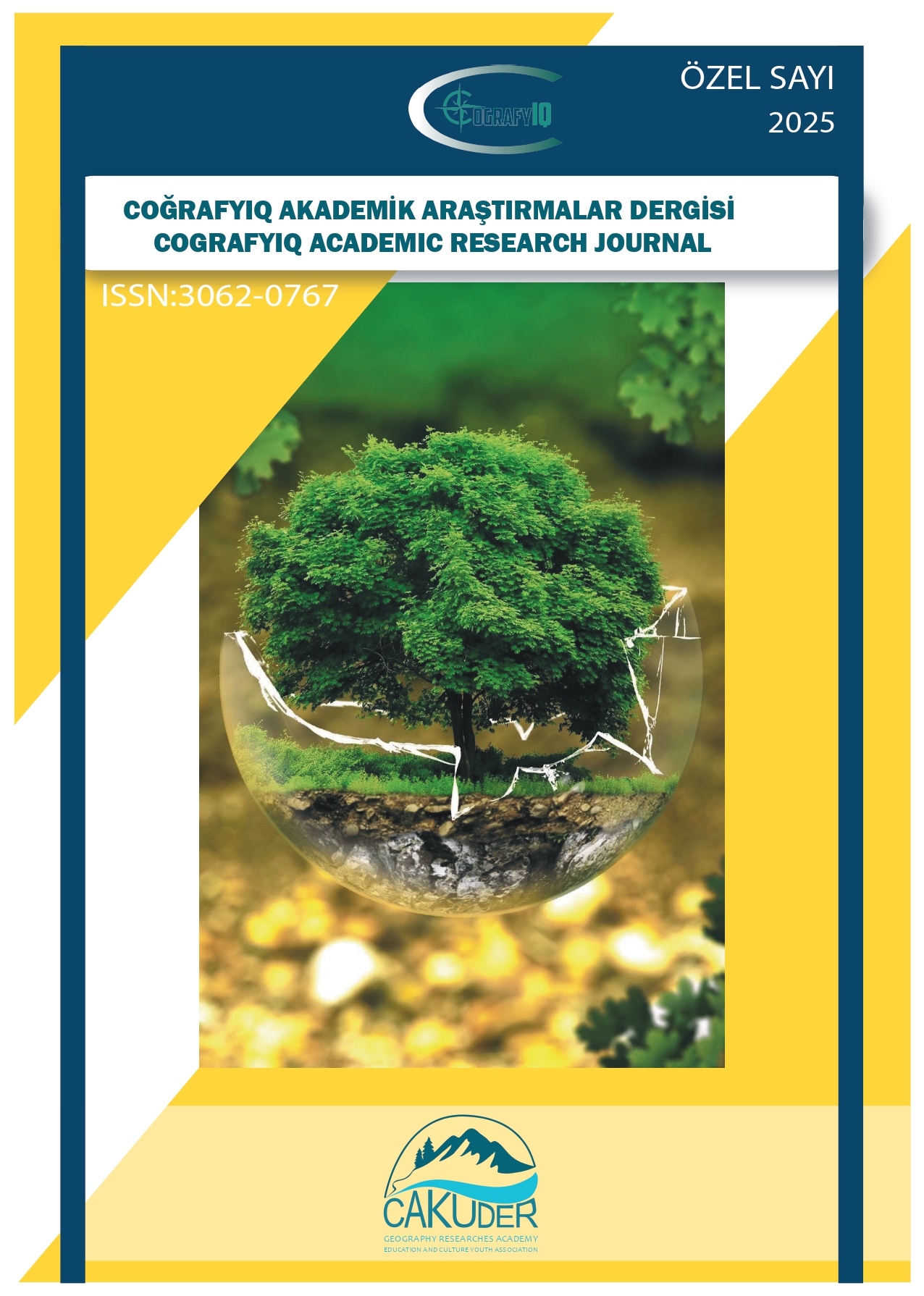Konya Plain Agricultural Lands Salinization Problem, Causes and Solution Suggestions
DOI:
https://doi.org/10.5281/zenodo.14591004Keywords:
Konya Plain, Basin planning, Soil Degradation, Soil salinizationAbstract
Due to the rapidly increasing world population, it is necessary to improve the lands that have been degraded and currently have production potential. It is inevitable that the greatest struggle of humanity for the future will be to combat the rapidly spreading degradation. It is imperative to change approaches and policies for sustainable agriculture. Basin management should not be considered as an idea aimed at protecting the hydrological services provided by the basin or minimizing or preventing groundwater effects, but as an integrated basin management.
A relationship has been established between excess water and agricultural product increase in the Konya plain for many years due to the irrigation culture, and even when surface water resources are insufficient, the use of underground water resources has increased day by day. So much so that irrigation is attempted with a well opened at almost every field. This situation causes the groundwater level to retreat to very deep depths.
The aim of the study is to examine the environmental impacts resulting from activities carried out to increase production in the Konya Plain, which is used as an agricultural production area, to identify the negative structural problems that occur and to offer solutions, thus contributing to the participatory approach proposal for sustainable basin planning. The material and data sources of the study consist of studies conducted as subject-field studies (articles, books, thesis, reports, notifications). The information obtained through the literature review was compiled and the environmental assessment of agricultural activity and soil-water use was emphasized, solution proposals were developed in the light of geographical principles, and suggestions for the sustainable development plans of the field were put forward.
References
Akgül,H.,2003. Salinity. Journal of Agricultural Engineers No. 340.
Atalay,İ., 2016.Applied Geomorphology.Meta Printing Publishing House
Bahçeci,İ.,Tarı,A.F.,Dinç,N.,2007a.Usage Possibilities of Groundwater and Drainage Waters in Irrigation in Konya Plain Subsurface Drainage Systems. Selçuk University Faculty of Agriculture Journal 21(43):7-13.
Bahçeci,İ.,Tarı,A.F. and Dinç N. 2008b. Prediction of Controlled Drainage Irrigation Efficiency and Its Effect on Soil Salination with Saltmod in Konya Plain. Harran University Faculty of Agriculture Journal, 12 (2): 69-77.
Başçiftçi, F,Duduran, S.S.- İnal, C.2013.Mapping of groundwater levels in Konya Closed Basin with Geographic Information System (GIS). Electronic Journal of Mapping Technologies 5(2):1-5
Bozyiğit,R.,Güngör,Ş.,2011. Soils and Problems of Konya Plain. Marmara Geography Journal 24:169-200.
Bozyiğit,R.,Tapur,T., 2009. Effect of Groundwater on Sinkhole Formation in Konya Plain and Surroundings. Selçuk University Social Sciences Institute Journal.
Çakmak,B.,Kendirli,B.,2001. Water Table and Salinity Problems in Konya Plain Irrigation. Journal of Agricultural Sciences. 7(4):41-47.
Deliboran, A., Savran, Ş., 2015. Soil Salinity and Plant Resistance Mechanisms to Salinity. Turkish Scientific Reviews Journal 8(1):57-61.
Dinç,N.,Bahçeci,İ.,Tarı, A.F.,2004. Temporal Change of Groundwater Levels in Closed Drainage Systems Established in Konya Plain. E-article. Internet Access Date 16.04.2019.
Direk, M.,Acar, B., l-Gül,A., 2006. Social Assessment of Groundwater Use in Agriculture in Konya Plain. Proceedings Book of TMMOB 1st Water Policies Congress.
Ergene,A.,1982. Soil Information. Atatürk University Faculty of Agriculture Publications.
Garipağaoğlu,N.,2017. Regional Planning and Spatial Planning Approaches in Turkey. Yeditepe Publishing House.
Gungor,Y., Ersözel,A.Z.,Yıldırım,O.1996. Irrigation. Ankara University Faculty of Agriculture Publications No:1443
Goçmez,G.,İşçioğlu,A. 2004. Groundwater Changes in Konya Closed Basin. Proceedings Book of 1st National Groundwater Symposium:19-28.
Kurunç,A.,2018. Irrigation Systems Usage Techniques Lecture Notes. Internet Access Date 15.04.2019 http://aves.akdeniz.edu.tr/.
Muluk, Ç.B, Kurt, B., Tural A., Türker A., Çalışlar M.A, Balkız E. Gümrükçü, S.Songül G., Zeydanlı, U.,2013. Water Status and New Approaches in Water Management in Turkey: Environmental Perspective. Inner World and Sustainable Development Association-Nature Conservation Center
Ökten,S.,2011.Environmental problems caused by water management policies in Konya Basin and general solution-oriented studies. Süleyman Demirel University Visionary Journal 3(5):124-147.
Parlak, Z.,2010. Creating a livable countryside “Land Consolidation” Internet Access Date 19.04.2019.
Toprak,R.,Süheri,S.,Acar,B.,2008. Konya Basin in Terms of Climate-Agricultural Drought-Irrigation and Environment Interaction. Konya Closed Basin Groundwater and Drought Conference Proceedings Book:67-76.
Üstün,A.-Tuşat,E.-Abbak,R.A 2007. Monitoring of Groundwater Withdrawal and Possible Results in Konya Closed Basin with Geodetic Methods. III. Engineering Measurements Symposium Proceedings Book:52-61.
Yılmaz,M.,2010. Environmental Problems Caused by Groundwater Level Changes in Karapınar Surroundings. Ankara University Journal of Environmental Sciences 2(2):145-163.
Reports
Today's Water in Konya Report. 2014. WWF Turkey.
KOP Action Plan and KOP Region Public Investments. 2018.2017 IV. Period Monitoring Report.
Kop Region Water Supply Proposals Report from Outside the Basin.2013. Republic of Turkey Ministry of Development KOP Region Development Department Presidency
Downloads
Published
How to Cite
Issue
Section
License
Copyright (c) 2025 Halil Mesut Baylak, BARIŞ TAŞ

This work is licensed under a Creative Commons Attribution 4.0 International License.



